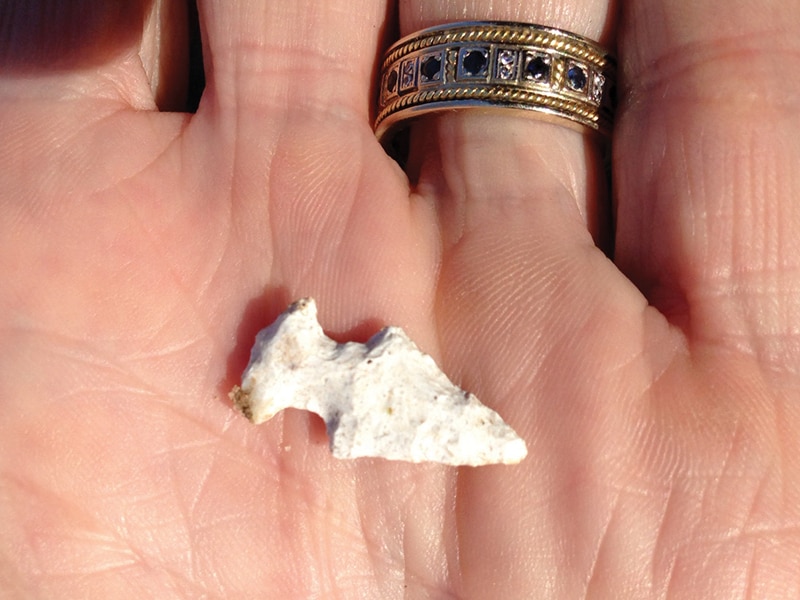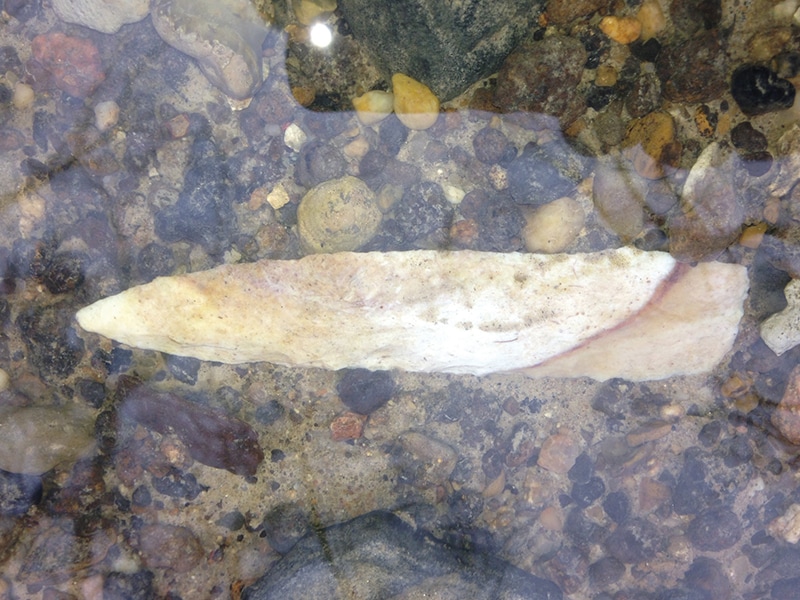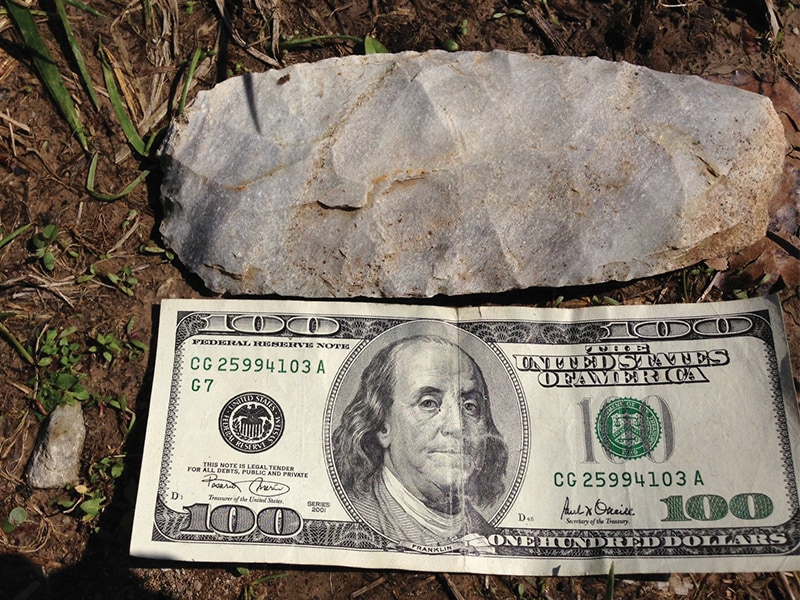The Arrowhead Hunter

Dad collected arrowheads and he had a cigar box full of his best ones. I don’t recall that he actually took the time to hunt for them, but likely walked upon them while hunting, fishing or running his trap line -- and simply picked them up.
It’s a little different for me, I actually like to walk the tilled fields and the ditches and creeks looking for them – especially just after a serious rain. Brenda often accompanies me on these outings and that is her hand holding the bird point above – which she found. You might say that we find it relaxing, although the tilled fields can be tough walking if you get into them too soon after a rain; and some of the creeks would be good obstacle courses.
“Rocks” are what some of us call them and when showing off a new “rock” at work, someone always says “I’ve never found one, what do you look for?” The answer is simple, but complicated; you don’t have to look for a completely exposed, flat on the ground, dirt-free ‘rock’ – those will almost always find you, because even small ones are easy to see. What you are looking for is a small part of a ‘rock’ wherein the edge has been carefully chipped to form serrations (as in the accompanying pictures); the rock may be mostly buried in the dirt or covered with leaves, and you will see only the tip, corner or edge. Color varies, so don’t just look at white rocks, and be sure and go very, very slow and look carefully.

Another frequent question is “How old is it?” For this I defer to archaeologists who say they vary from 1,000 to 12,000 years.
Some people find more arrowheads than others and that is mostly due to time in the field, and location. My favorite story about arrowheads occurred several years ago when I found my first small bird point. I showed it off to Stan Frink, a friend at work, commenting that Dad only had one this small in his collection and this was my first small one; “had he ever found one this small?”, I asked. His short reply was “yep, have a whole pill bottle full of em; used to run the back furrow behind the plow, when I was a kid and dad was plowing the bottoms up home.”

